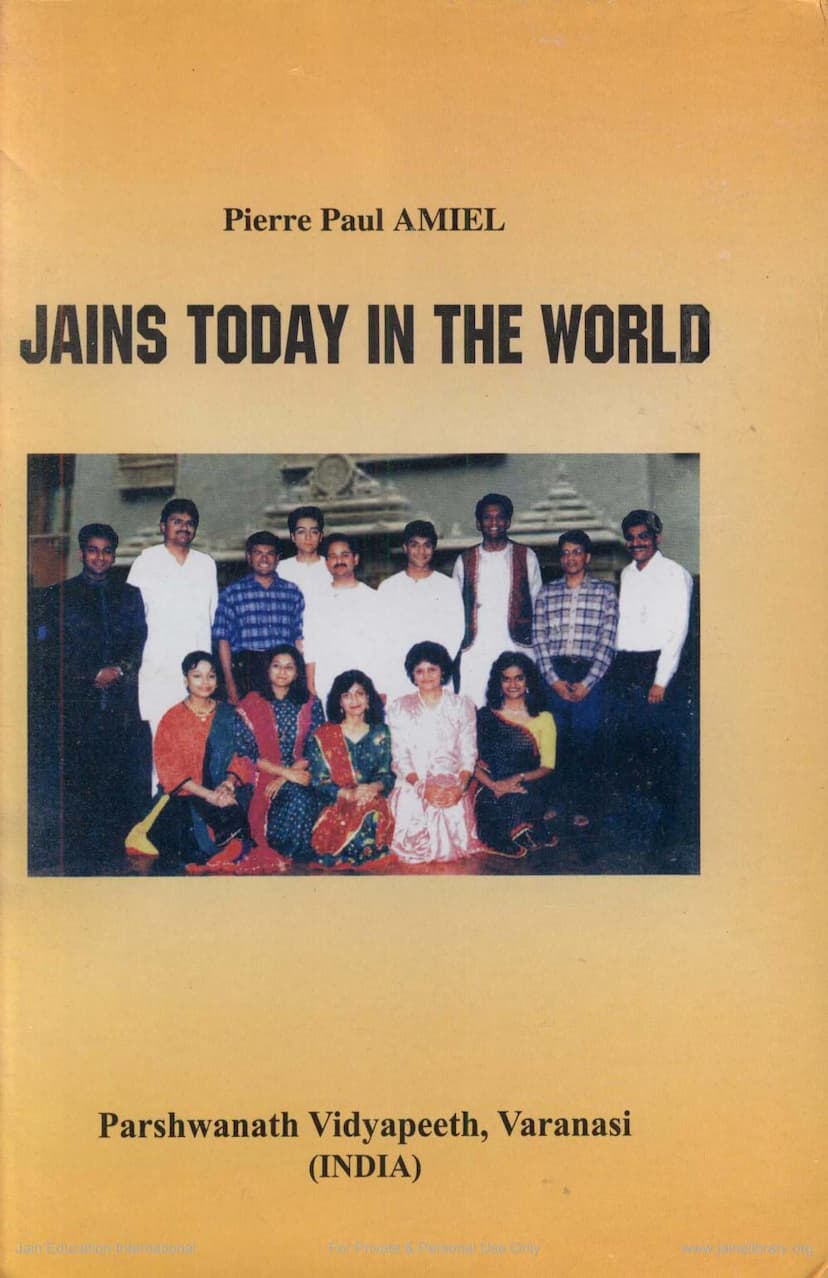Jains Today In World
Added to library: September 2, 2025

Summary
Pierre Paul Amiel's "Jains Today in the World" is a comprehensive and accessible overview of the Jain faith and its followers. Originally published in French as "Les Jains aujourd'hui dans le monde," this English translation, edited by Prof. Sagarmal Jain and Dr. S. P. Pandey, aims to shed light on a religion that, despite its ancient origins and profound principles, remains relatively unknown to the wider public.
The book is structured to provide a thorough understanding of Jainism, addressing key aspects of the faith and its adherents:
Core Content:
- History: The book traces the long history of Jainism, starting from periods before Lord Mahavira, through the significant era of Mahavira's reforms, and up to the contemporary global presence of Jains. It details the lineage of the 24 Tirthankaras, highlighting key figures like Rishabhadeva (Adinatha) and Parshvanatha, and situating Mahavira within the historical context of ancient India.
- Diversity: Amiel delves into the significant divisions within Jainism, primarily the Digambara and Svetambara traditions, explaining their doctrinal and practical differences. He also touches upon the various sub-branches and the existence of Jain castes and sub-castes, noting their origins rooted in professions and geographical locations rather than the rigid Hindu caste system.
- Revered Beings: The text clarifies Jain beliefs about revered beings, emphasizing the absence of a creator God. The focus is on the Tirthankaras and Siddhas as embodiments of liberation and spiritual perfection, and the veneration of ascetics (Acharyas, Upadhyayas, Sadhus, Sadhvis) as living exemplars of the Jain path. It also discusses the reverence for celestial beings and the respect for all forms of life.
- Sacred Texts and Writings: The book provides an overview of the extensive Jain literature, including the canonical scriptures of both the Svetambara and Digambara traditions, as well as commentaries and other religious writings. It acknowledges the efforts made to preserve and translate these ancient texts.
- Temples and Sacred Places: Amiel meticulously details the numerous Jain temples and sacred sites, particularly in India, showcasing their architectural diversity and artistic richness. He categorizes them by region (North India, South India) and also highlights the emergence of Jain temples and communities in other parts of the world, including Europe, North America, Africa, and Asia.
- Lay Life: The book dedicates significant attention to the lives of Jain laymen and women (śrāvaka and śrāvikā). It outlines the stages of their lives, from youth and education to marriage and active life, and their spiritual progress through various vows and duties. The principles of vegetarianism, non-violence in daily activities, and the importance of self-control are emphasized.
- Rites, Cults, and Festivals: Amiel explains the various rites of passage, such as marriage and initiation ceremonies, and the daily devotional practices (pūjā) observed by Jains. He also provides a comprehensive list of Jain religious festivals, detailing their historical and spiritual significance, and the specific observances associated with them.
- Religious Symbols, Drawings, and Expressions: The book explores the rich symbolic language of Jainism, including the meaning behind revered beings, temple architecture, statues, sacred books, and practices. It explains the significance of various mantras, sutras, hymns, and prayers, and the symbolism in drawings like mandalas and yantras.
- Ascetics: A detailed look is given at the life of Jain ascetics, their reasons for renouncing the world, the conditions for admission into monastic orders, the rigorous rules they follow, their daily timetables, and their approach to illness and death. The distinct practices of Svetambara and Digambara ascetics are also noted.
- Prominent Features in India and Abroad: The final chapter summarizes the influence of Jains in India across various domains—philosophy, religion, social issues, politics, economy, literature, art, and architecture. It then extends this analysis to the global presence of Jains, detailing their impact and activities in countries worldwide, highlighting their contributions to interfaith dialogue, humanitarian efforts, and the preservation of their rich cultural heritage.
Key Themes and Contributions:
- Accessibility: Amiel's work is praised for its clarity and comprehensiveness, making a complex religion accessible to a general audience.
- Global Perspective: The book is particularly notable for its detailed account of Jain communities outside of India, a topic often overlooked in previous literature.
- Emphasis on Ahimsa: The principle of non-violence (ahimsa) is presented as a foundational tenet that permeates all aspects of Jain life, from dietary practices and professional choices to inter-personal relationships and environmental consciousness.
- Relevance to Modern World: The author highlights the enduring relevance of Jain principles like non-violence, environmentalism, and self-control in addressing contemporary global challenges.
- Documentation: The book includes extensive notes, annexes with bibliographies, glossaries, useful addresses, and symbolic representations, making it a valuable resource for further study.
In essence, "Jains Today in the World" by Pierre Paul Amiel serves as a vital introduction to the Jain tradition, offering a holistic view of its rich history, diverse practices, profound philosophy, and the dynamic presence of its followers in India and across the globe. It emphasizes the unique contributions of Jainism to world thought and culture, particularly its unwavering commitment to non-violence and its timeless ethical teachings.